DHDD Newsletter - September 2020
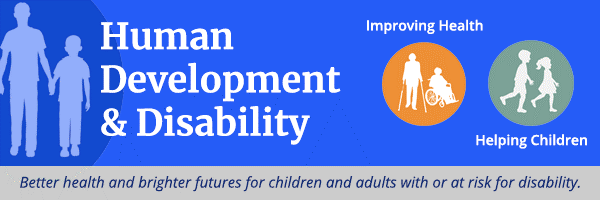
A Note from the DHDD Director:
Dear colleagues –
This month, we participated in virtual partner meetings with the Tourette Association of America (TAA), Children and Adults with Attention-Deficit/Hyperactivity Disorder (CHADD), the National Center on Physical Activity and Disability (NCHPAD), the Disability Research and Dissemination Center (DRDC) and the Administration for Community Living (ACL). These presented great opportunities for DHDD to connect with some of our partners and focus on collaborations. I look forward to joining several more meetings in the upcoming weeks. We have also started important work to promote flu vaccinations among people with disabilities. This year is especially critical as COVID-19 and flu could be circulating at the same time. We have created messaging and started regular meetings with partners to help amplify messaging.
During this challenging time, it’s important to remember that as public health professionals, working to ensure the safety and health of the public, we are making a difference! This is true in much of the work you all are supporting every day to ensure the health and well-being of children, and people with disabilities. I appreciate all that you do for DHDD, NCBDDD, and CDC. We can’t achieve all that we do without the contributions of each and every one of you, so thank you.
Take care and stay well,
Georgina Peacock
In the Spotlight
Many Adults with Disabilities Report Frequent Mental Distress
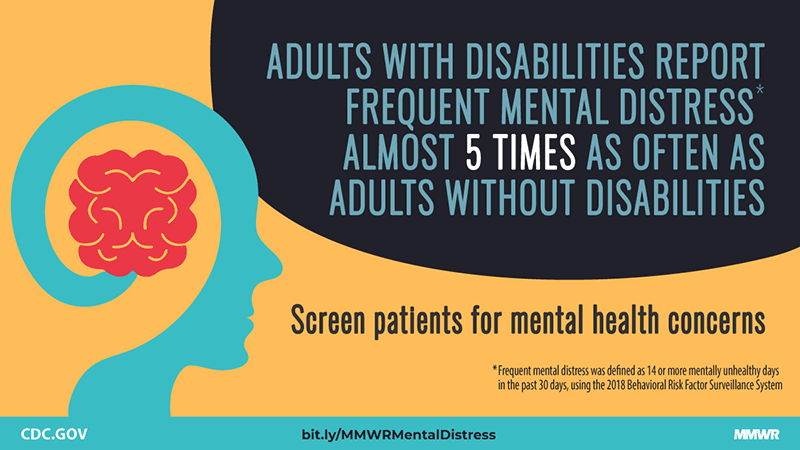
CDC researchers have published a new Morbidity and Mortality Weekly Report (MMWR) entitled Frequent Mental Distress among Adults by Disability Status, Disability Type, and Selected Characteristics – United States 2018.
The study suggests that adults with disabilities are at greater risk for experiencing frequent mental distress than those without disabilities. Frequent mental distress is defined as 14 or more mentally unhealthy days in a 30-day period. It is associated with adverse health behaviors, increased health services utilization, mental disorders, chronic diseases, and functional limitations.
This MMWR provides insight into various demographic disparities, including poverty and marital status, and potential mitigating factors as they relate to adults with disabilities and mental distress. Moreover, findings suggest the need for increased social cohesion, community participation, access to health promotion opportunities, and the delivery of mental health screening, care, and support services for adults with disabilities to reduce mental distress.
Read the full MMWR, view the easy-read notes, or access the key findings for a summary of the article.
New Research: Mental Health Symptoms in School-aged Children in Four Communities

A CDC study examined mental health symptoms in four different U.S. school districts. Based on teacher and parent report, about 1 in 6 students have enough behavioral or emotional symptoms and impairment to be diagnosed with a childhood mental disorder. Anxiety disorders are the most common, followed by oppositional defiant disorder and attention-deficit/hyperactivity disorder (ADHD). Teachers identified boys, non-Hispanic black students, and students receiving free or reduced-price lunch more often as high risk for mental disorders than their peers in most sites, but there were generally no demographic differences in the percentage of students who met the criteria for a mental disorder based on parent report. The rates varied among the different sites.
Schools, communities, and healthcare providers can use this information to plan for healthcare and school service needs of children and adolescents with mental disorders. Screening, identifying, and referring children and adolescents to effective treatments can help reduce and prevent the negative effects of mental disorders.
ADDM Network Supplemental Funding
Seven current Autism and Developmental Disabilities Monitoring (ADDM) Network sites were awarded funding to pilot statewide tracking of autism and other developmental disabilities. The goals of the project are to scale up tracking activities from children aged 4 and 8 years in one community to children 3 years and older statewide, utilize new electronic data sources, and explore the potential of expanding tracking of developmental disabilities beyond autism.
Reaching People with Disabilities who have Extreme Low Literacy
CDC has awarded COVID supplemental funding to RTI Internationalexternal icon for COVID-19 and Emergency Preparedness Messaging to Improve Communication to and Engagement of People with Disabilities and other Vulnerable Populations who have Extreme Low Literacy. The goal of this project is to support CDC’s efforts to improve communication and messaging about COVID-19 and emergency preparedness for people with disabilities who have extreme low literacy, caregivers of people with disabilities, and health care providers. DHDD staff are working closely with RTI International on this project and are excited to be a part of ensuring that people with disabilities who have extreme low literacy can receive critical information in an emergency.
New Resources
Learn the Signs. Act Early. Ambassadors Now in Every State!
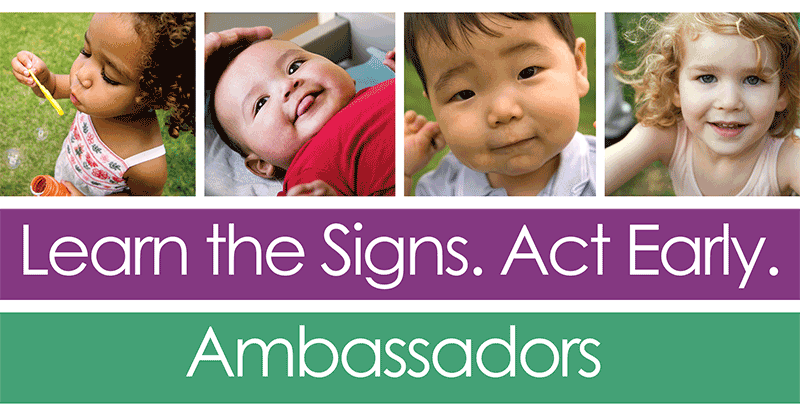
CDC’s National Center on Birth Defects and Developmental Disabilities and the Association of University Centers on Disabilities (AUCD)external icon with support from the Health Resources and Services Administration (HRSA), Maternal and Child Health Bureau (MCHB)external icon, are pleased to announce there is now an Act Early Ambassador in every state, the District of Columbia, and three territories.
Act Early Ambassadors work with CDC’s Learn the Signs. Act Early. (LTSAE) program to improve early identification of developmental delays and disabilities, including autism, in the following ways:
- Promoting the adoption and integration of LTSAE resources and materials to support developmental monitoring in systems that serve young children and their families
- Serving as a state or territorial representative of CDC’s national LTSAE program
- Supporting the work of Act Early Teams and other state/territorial or national initiatives to improve early identification of developmental delay and disability
Act Early Teams to Support COVID-19 Recovery in 43 States and Territories
Through an existing cooperative agreement, AUCD and NCBDDD will provide support to 43 Act Early Ambassador-led or co-led teams to support COVID-19 recovery and strengthen resilience skills, behaviors, and resources for children, families, and communities. The teams will conduct a rapid needs assessment and collaborate with early childhood systems and programs to carry out strategies to improve early identification of developmental delays and disabilities and share existing tools and programs to improve resiliency among families with young children during COVID-19 response and mitigation efforts.
Please contact Danielle Webber at dwebber@aucd.org or 202-525-9476 with any questions regarding the Act Early Ambassador or Act Early COVID-19 Response Teams programs.
For more information about LTSAE, please email ActEarly@cdc.gov.
How Right Now Initiative Shares New Tools to Help with Coping and Resilience During the COVID-19 Pandemic
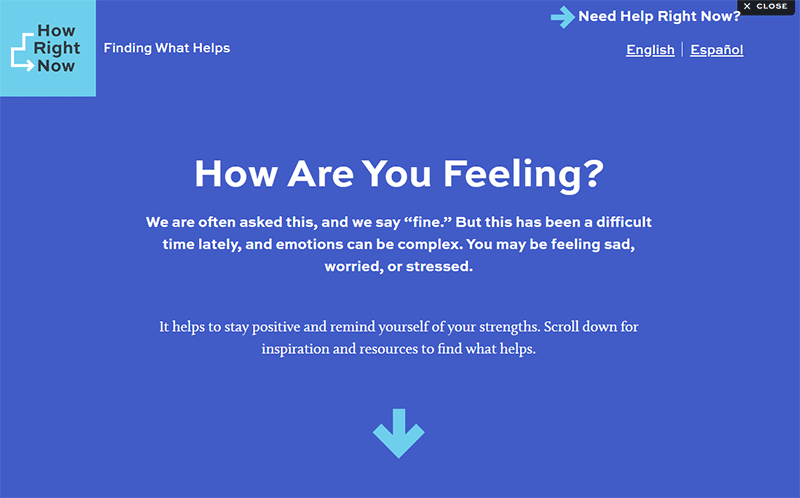
How Right Nowexternal icon (Que Hacer Ahoraexternal icon) is a new initiative that aims to address people’s feelings of grief, loss and worry during the COVID-19 pandemic. It offers information and support to help people cope and be resilient during this time. This initiative is made possible with funding through the CDC Foundation. Many national, regional and local organizations are working together to help improve individual and community resilience.
Visit www.Howrightnow.orgexternal icon to learn more.
Download How Right Now’s Partner Toolkit pdf iconexternal icon
Funding Opportunity: Addressing Needs of People with Disabilities in COVID-19 Local Preparedness Planning, Mitigation and Recovery Efforts
With support from DHDD, NACCHO is pleased to announce an open funding opportunity to improve local health department capability to effectively address the needs of people with disabilities when planning and responding to outbreaks, pandemics and other national emergencies, particularly during the current COVID-19 pandemic.
The main activities of the project include (1) awarding funds to a maximum of 10 local health departments to better address disability issues; (2) embedding disability champions, who will serve as subject matter experts, in local public health emergency preparedness planning and response programs; and (3) updating local emergency response plans to better serve the needs of people with disabilities during outbreaks, pandemics, and other national emergencies.
NACCHO will make up to ten (10) awards available to local health departments with awards up to $83,000 each.
Applications must be submitted via email to slyons@naccho.org no later than Tuesday, October 13, 2020 at 11:59 PM ET.
Now Open for Applications: Study to Explore Early Development (CDC-RFA-DD-21-001)
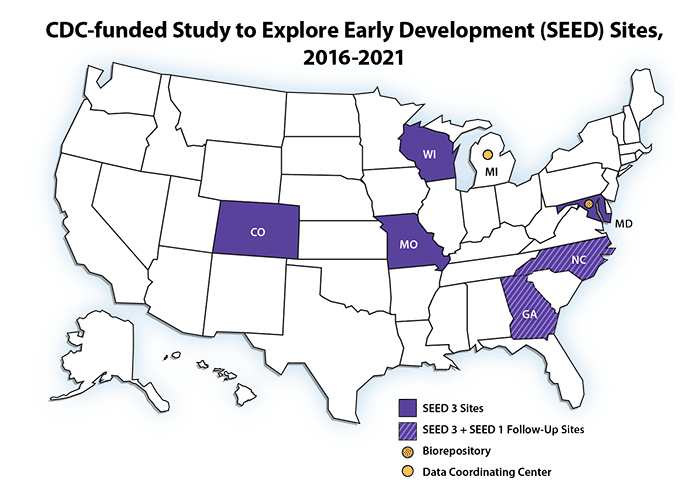
On September 3, 2020, CDC published a new Notice of Funding Opportunity (NOFO), CDC-RFA-DD-21-001, Study to Explore Early Development (SEED) Follow-up Studies. CDC plans to fund up to 6 recipients to participate in epidemiological follow-up studies of children previously enrolled in SEED. This project will add knowledge about autism spectrum disorder (ASD), including risk factors for ASD and the expression of ASD, from childhood through early adulthood, and information that can be used to improve the health and functioning of individuals with ASD as they mature.
The application period closes November 10, 2020.
Find additional information on the SEED funding opportunity.
2018 Early Hearing Detection and Intervention Data
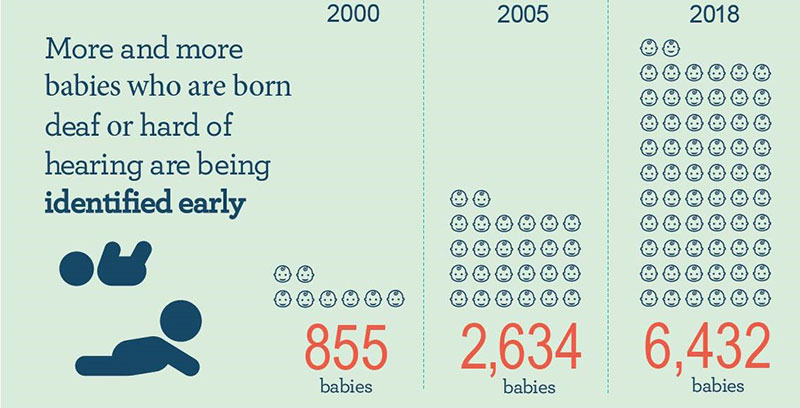
More and more babies who are born deaf or hard of hearing are being identified early. In 2018, over 6,400 babies were identified, with 2 out of 3 of these infants enrolled in timely intervention services. View the latest Early Hearing Detection and Intervention (EHDI) data to find out how many infants were screened, diagnosed and enrolled in early intervention services in your state.
Publications
Newborn Screening Identifies Nearly 13,000 Babies Each Year
In the first national report based on cases from all 50 states, CDC scientists found that approximately 12,900 births might be identified in the United States each year with newborn screening. Hearing loss, hypothyroidism, sickle cell disease, and cystic fibrosis were the most common disorders identified in the study.
Newborn screening continues to be a great public health achievement, offering early detection, intervention, and potential improved outcomes to all infants, regardless of geographic, ethnic, or socioeconomic differences.
National Health Care Expenditures Associated with Disability
In a recent publication, CDC scientists determined that in 2015, estimated disability-associated health care expenditures (DAHE) were $868 billion. This is 36% of total national health care spending in the US and totaling $17,431 per person with a disability. More than half (54%) of all Medicare expenditures and 72% of all Medicaid expenditures were associated with disability.
The high proportion of DAHE paid by public insurers reinforces the importance of public programs to improve health care for people with disabilities and the need for evaluating programs and health services to ensure they are evidence-based and effective.
Read a scientific summaryexternal icon
What Kind of Treatment do Children with Tourette Syndrome Receive?
CDC recently published a study titled “Treatment Use Among Children with Tourette Syndrome Living in the United States, 2014” in the journal Psychiatry Research. The study was based on the 2014 National Survey of the Diagnosis and Treatment of ADHD and Tourette Syndrome.
Key findings:
- Approximately 3 of 4 children with Tourette syndrome received treatment
- Over 1 in 3 children with Tourette syndrome received both behavioral intervention and medication
- Tourette syndrome treatment was more common with moderate or severe Tourette syndrome or co-occurring disorders
- Over 8 in 10 children who took Tourette syndrome medication experienced adverse side effects
Newborn Hearing Screening and Diagnostic Services in Nine States

Researchers from DHDD’s Early Hearing Detection and Intervention (EHDI) program published a studyexternal icon in the Journal of Public Health Management & Practice looking at the timeliness of key events in the EHDI process from birth through diagnosis of hearing loss among different populations in 9 U.S. states.
After looking at data from 754,613 infants born in calendar year 2017, researchers found that
- Most babies (97%) met the timely screening benchmark of hearing screening by 30 days of age,
- About 2 in 3 babies who did not pass their final hearing screening received their recommended follow up diagnostic evaluation. Around 60% of those evaluated received a final diagnosis – of normal hearing or permanent hearing loss – by 90 days of age, and
- Babies born to black and American Indian/Alaska native mothers and mothers without college degrees, as well as babies who spent time in NICU nurseries, were at increased risk for delayed diagnostic testing for hearing loss.
To help minimize delay in the receipt of critical diagnostic and early intervention services, state EHDI programs may consider providing additional follow-up and education to under-represented racial/ethnic groups and mothers with lower education levels. Pediatric audiologists and EHDI programs may also consider developing or updating best practice guidelines specifically for NICU infants and their families.
DHDD’S mission is to lead inclusive programs to optimize the health and development of children and adults with, or at risk for, disabilities.
